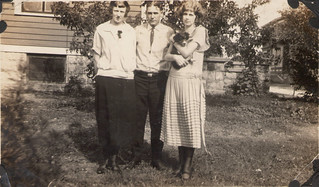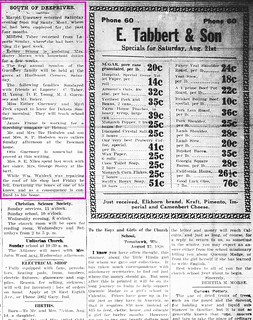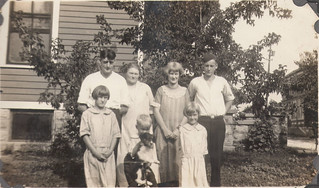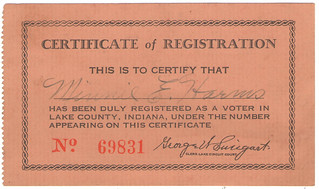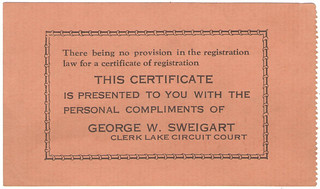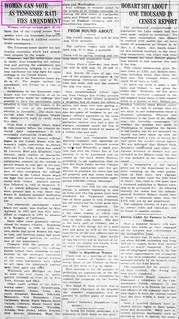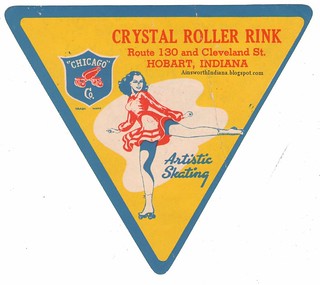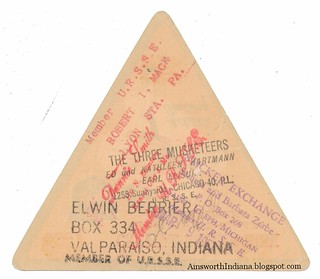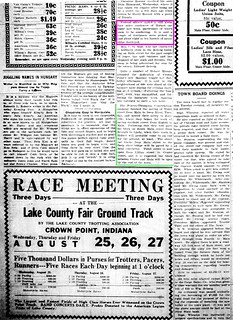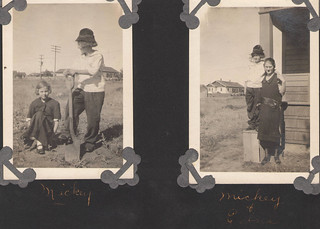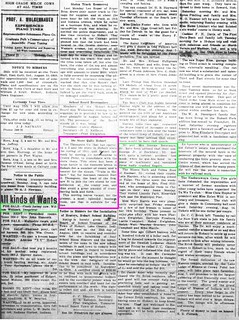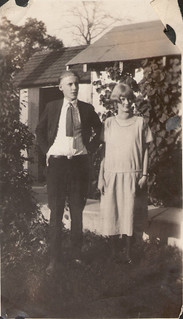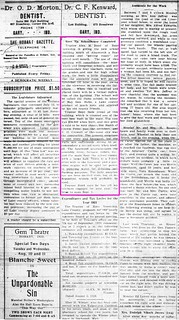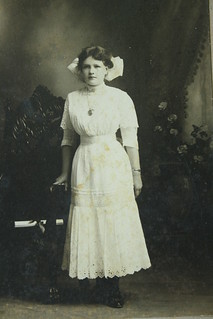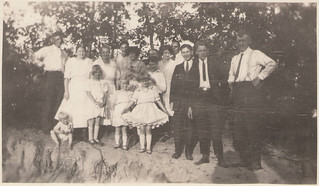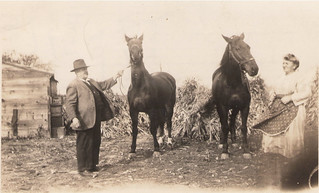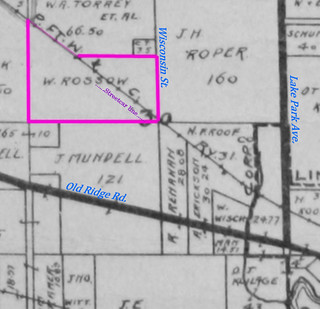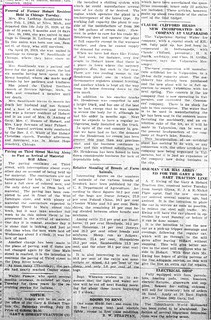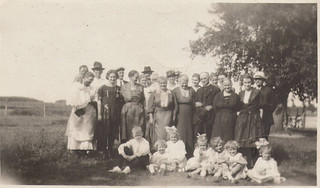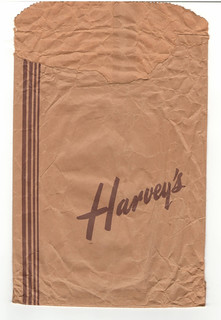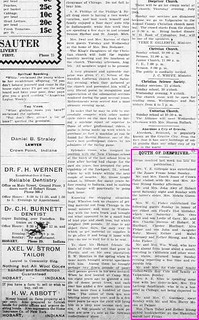The Hobart Motorcycle Club had gathered at the track around 2:30 on the afternoon of Sunday, August 22. That was the usual time for races, but this was no big event, just a practice race among the club members. As they organized as the starting line, one among them — Emerson Whisler, the club secretary — warned them to be careful. Or so said a witness, after the disaster.
It was Emerson Whisler, taking the curve at the south end of the track, who lost control of his bike and took a bad spill, striking his head. He was unconscious when the other riders stopped to help him. They carried him to the McAuliffe house. There he remained unconscious, as a doctor was sent for, and probably his family as well, as the hours went by with no improvement. About 1:30 Monday afternoon, Emerson died without ever having regained consciousness. The cause of death was concussion.
I do not know whether Hobart's motorcycle racers ever wore much in the way of protective headgear. We've seen images among the glass-plate negatives like this one of cyclists wearing ordinary caps or a rudimentary leather helmet. At an informal race in August, riders may well have gone bareheaded.
The 29-year-old Emerson left a wife and two children, besides his parents and four or five sisters. He had come to Hobart four years earlier, working first as a streetcar conductor, and then going into the Gary mills. In addition to the motorcycle club, he belonged to the local Odd Fellows lodge; his brothers there took charge of the funeral. It was held on Wednesday, August 25, at Emerson's home west of Hobart on Ridge Road. The motorcycle club "turned out in a body," according to the News, "and the long line of motorcycles at a funeral was an impressive sight as well as an unusual occurrence." The fallen rider was buried in Crown Hill Cemetery.
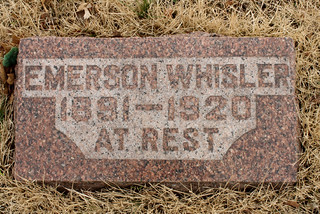
(Click on image to enlarge)
Sources:
♦ "Dies as Result of Accident." Hobart Gazette 27 Aug. 1920.
♦ "First Fatality at Hobart Speedway Last Sunday." Hobart News 26 Aug. 1920.

